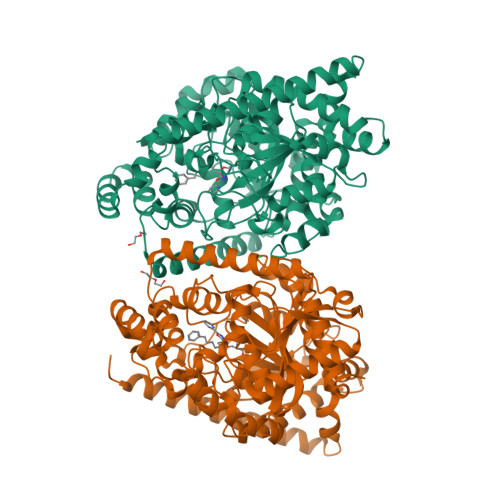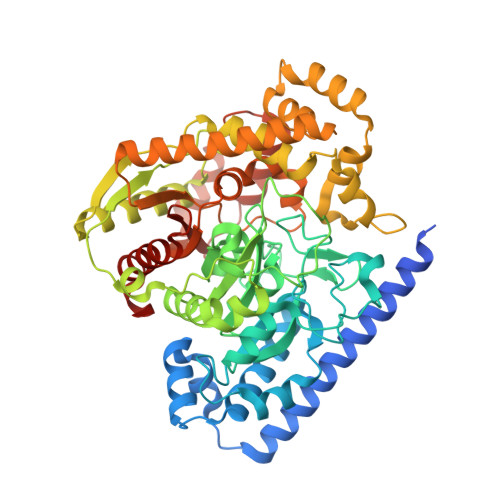Fluoride-mediated capture of a noncovalent bound state of a reversible covalent enzyme inhibitor: X-ray crystallographic analysis of an exceptionally potent alpha-ketoheterocycle inhibitor of fatty acid amide hydrolase.
Mileni, M., Garfunkle, J., Ezzili, C., Cravatt, B.F., Stevens, R.C., Boger, D.L.(2011) J Am Chem Soc 133: 4092-4100
- PubMed: 21355555
- DOI: https://doi.org/10.1021/ja110877y
- Primary Citation of Related Structures:
3PPM, 3PR0 - PubMed Abstract:
Two cocrystal X-ray structures of the exceptionally potent α-ketoheterocycle inhibitor 1 (K(i) = 290 pM) bound to a humanized variant of rat fatty acid amide hydrolase (FAAH) are disclosed, representing noncovalently and covalently bound states of the same inhibitor with the enzyme. Key to securing the structure of the noncovalently bound state of the inhibitor was the inclusion of fluoride ion in the crystallization conditions that is proposed to bind the oxyanion hole precluding inhibitor covalent adduct formation with stabilization of the tetrahedral hemiketal. This permitted the opportunity to detect important noncovalent interactions stabilizing the binding of the inhibitor within the FAAH active site independent of the covalent reaction. Remarkably, noncovalently bound 1 in the presence of fluoride appears to capture the active site in the same "in action" state with the three catalytic residues Ser241-Ser217-Lys142 occupying essentially identical positions observed in the covalently bound structure of 1, suggesting that this technique of introducing fluoride may have important applications in structural studies beyond inhibiting substrate or inhibitor oxyanion hole binding. Key insights to emerge from the studies include the observations that noncovalently bound 1 binds in its ketone (not gem diol) form, that the terminal phenyl group in the acyl side chain of the inhibitor serves as the key anchoring interaction overriding the intricate polar interactions in the cytosolic port, and that the role of the central activating heterocycle is dominated by its intrinsic electron-withdrawing properties. These two structures are also briefly compared with five X-ray structures of α-ketoheterocycle-based inhibitors bound to FAAH recently disclosed.
Organizational Affiliation:
Department of Chemistry, Scripps Research Institute, 10550 North Torrey Pines Road, La Jolla, California 92037, United States.





















